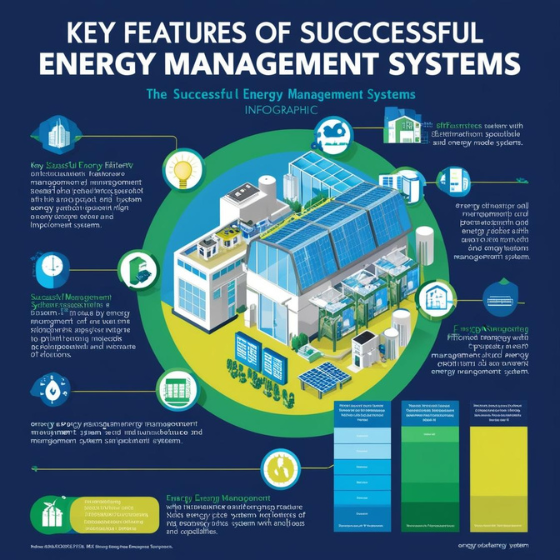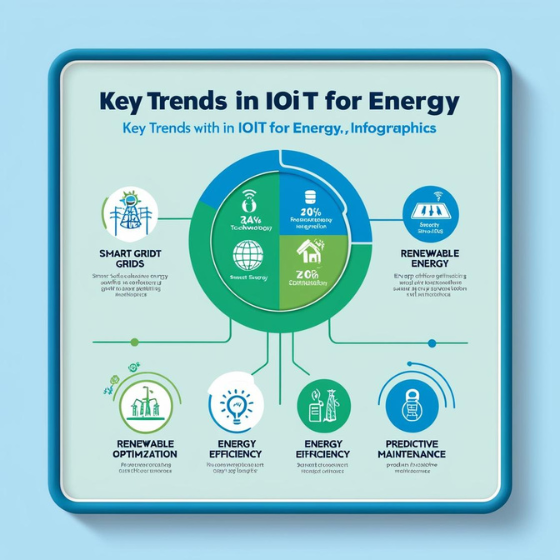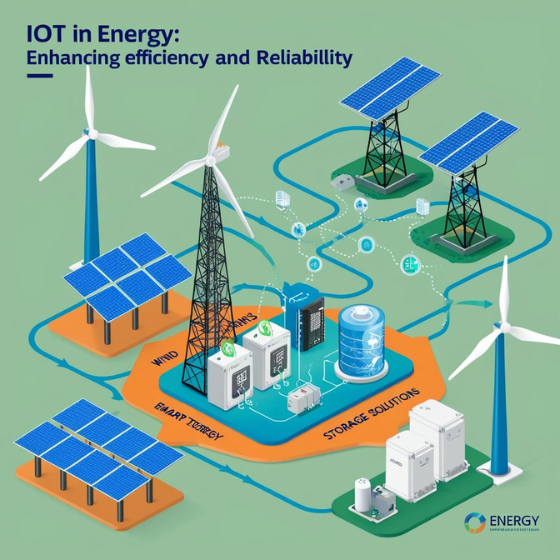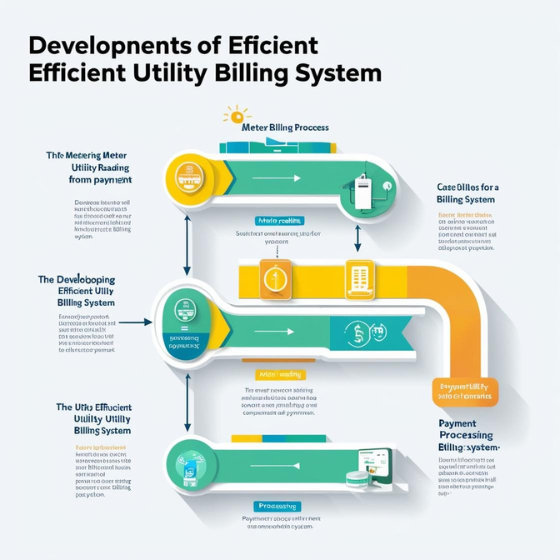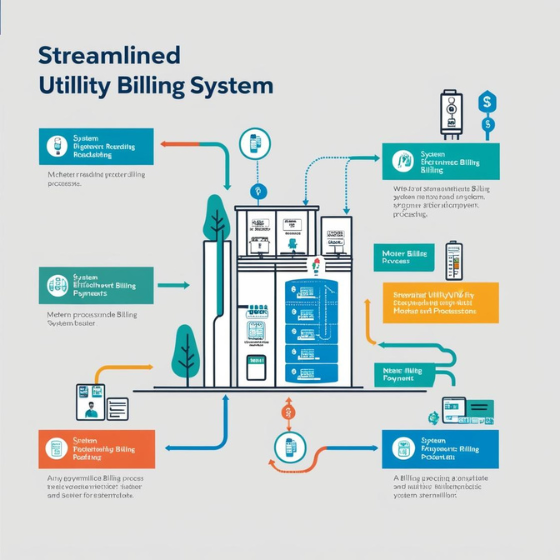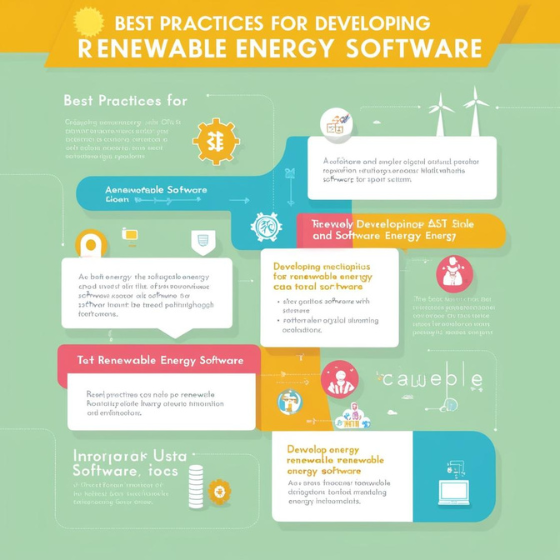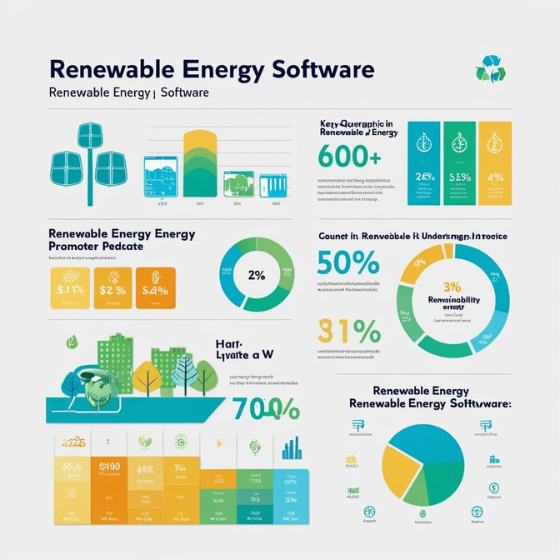Key Features of Successful Energy Management Systems
In a rapidly evolving energy landscape, the need for efficient energy management is more critical than ever. Energy Management Systems (EMS) have become indispensable tools for organizations seeking to optimize energy use, reduce costs, and contribute to environmental sustainability. But what makes an EMS truly successful?
This blog will explore the key features of successful energy management systems, highlighting the capabilities that set them apart and help businesses achieve their energy goals.
Introduction: Why Energy Management Systems Matter
Energy is one of the most significant operational costs for businesses, accounting for nearly 20-40% of total expenses in energy-intensive industries. An efficient EMS addresses this by offering tools and insights that enable better decision-making and energy optimization.
According to the International Energy Agency, energy efficiency improvements could cut global emissions by nearly 40% by 2040. This highlights the vital role of EMS in creating a sustainable future while improving the bottom line for businesses.
Let’s break down the essential features that define a successful EMS and how they benefit organizations.
1. Real-Time Monitoring and Data Collection
Why It Matters
Real-time energy monitoring provides businesses with a clear picture of how energy is consumed across different systems, equipment, or sites. It’s the foundation for making informed decisions about energy use.
Key Components
- IoT Sensors and Smart Meters: These devices track energy usage, temperature, and other variables.
- Energy Dashboards: Intuitive dashboards allow users to view energy consumption metrics at a glance.
- Alerts and Notifications: Automated alerts warn users about spikes, anomalies, or inefficiencies in energy usage.
Example
A manufacturing facility identified a 15% energy wastage in non-peak hours by monitoring real-time data, leading to policy changes that saved thousands annually.
Pro Tip: Ensure your EMS integrates seamlessly with IoT devices for accurate and continuous monitoring.
2. Advanced Energy Analytics and Insights
Why It Matters
Data is only valuable if it leads to actionable insights. A successful EMS leverages advanced analytics to provide recommendations for energy optimization.
Key Features
- Predictive Analytics: Forecast energy demand to align with peak and off-peak usage.
- Anomaly Detection: Identify irregularities such as faulty equipment causing energy spikes.
- Energy Audits: Analyze historical data to uncover inefficiencies and trends.
Benefit
By analyzing patterns, companies can implement changes that reduce waste and improve operational efficiency.
3. Automation and Smart Controls
Why It Matters
Automation eliminates human error and ensures energy-saving practices are consistently applied.
Key Features
- Automated Scheduling: Adjust HVAC, lighting, and machinery usage based on pre-set schedules.
- Smart Controls: Dynamically adjust energy systems based on real-time data, such as occupancy or weather conditions.
- Demand Response Capabilities: Automatically reduce energy consumption during peak grid demand to avoid high costs.
Example
Commercial buildings using smart lighting systems reduced energy consumption by 30% simply by automating lighting schedules based on occupancy data.
4. Integration with Renewable Energy Sources
Why It Matters
The transition to renewable energy is a priority for businesses aiming to reduce their carbon footprint. A successful EMS ensures smooth integration of renewables into energy systems.
Key Features
- Energy Source Prioritization: Switch between solar, wind, or grid power based on availability and cost.
- Battery Storage Management: Optimize the use of stored renewable energy during low-generation periods.
- Grid Feedback: Enable facilities to sell excess renewable energy back to the grid.
Example
A corporate campus integrated solar panels and an EMS, reducing grid reliance by 40% and saving $120,000 annually.
5. Customizable Reporting and Compliance Tracking
Why It Matters
For businesses subject to stringent environmental regulations, compliance is non-negotiable. Customizable reporting tools simplify this process while offering insights to improve performance.
Key Features
- Regulatory Compliance Reports: Generate reports aligned with local or international energy standards.
- KPI Tracking: Set and measure progress toward energy efficiency goals.
- Carbon Footprint Measurement: Track and report greenhouse gas emissions for sustainability audits.
Benefit
Comprehensive reporting tools enable businesses to showcase their commitment to sustainability while staying compliant.
6. Scalability and Interoperability
Why It Matters
As businesses grow, their energy needs evolve. A scalable and interoperable EMS ensures that the system remains relevant and effective over time.
Key Features
- Modular Design: Add new features or integrate new technologies without overhauling the system.
- Multi-Site Management: Monitor and manage energy usage across multiple locations from a single dashboard.
- Third-Party Integrations: Work seamlessly with other software tools, such as Building Management Systems (BMS).
Example
A retail chain implemented a scalable EMS across 50 stores, achieving consistent energy savings of 20% across all locations.
7. Robust Cybersecurity Measures
Why It Matters
With increasing connectivity, EMS are vulnerable to cyber threats. Ensuring robust security is critical for safeguarding sensitive energy data and systems.
Key Features
- Data Encryption: Protect energy data from unauthorized access.
- User Authentication: Implement multi-factor authentication for system access.
- Anomaly Monitoring: Detect and respond to potential security breaches in real time.
Benefit
A secure EMS ensures business continuity and protects against costly downtime or data breaches.
The Benefits of a Successful EMS
A well-designed energy management system delivers:
- Cost Savings: Optimize energy use to reduce operational expenses.
- Sustainability: Meet environmental goals and reduce carbon emissions.
- Operational Efficiency: Enhance productivity by maintaining optimal energy conditions.
- Competitive Advantage: Demonstrate energy efficiency to customers, stakeholders, and regulators.
Challenges and How to Overcome Them
Even with the best features, EMS implementation can face hurdles:
1. High Initial Costs
- Solution: Leverage government incentives and energy efficiency grants to offset costs.
2. Resistance to Change
- Solution: Provide training to employees and communicate the benefits of EMS adoption.
3. Integration Issues
- Solution: Choose an EMS provider with experience in integrating with existing infrastructure.
Conclusion: Key Features Drive Success
The key features of successful energy management systems—real-time monitoring, advanced analytics, automation, renewable integration, and scalability—are essential for achieving energy efficiency and sustainability goals. Businesses that invest in these features not only reduce costs but also strengthen their environmental stewardship.
Ready to take control of your energy future? Contact Sodio to discover how our customizable EMS solutions can revolutionize your energy strategy.
